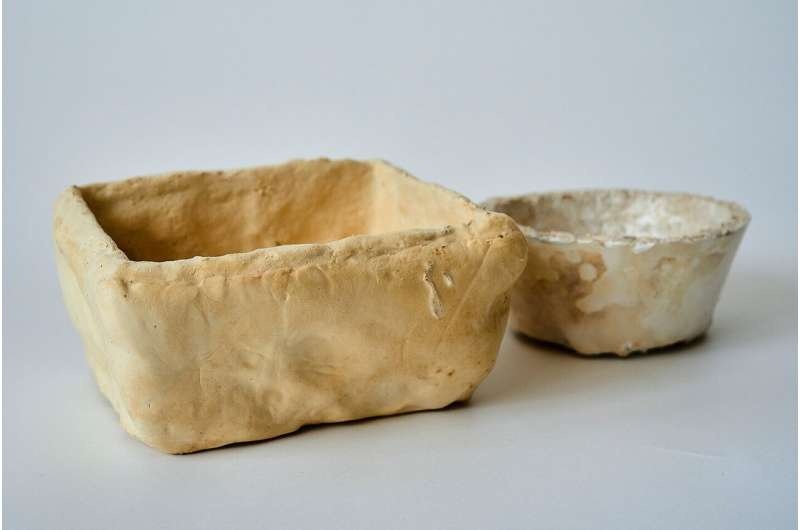Our researchers are harnessing the power of fungal mycelium, creating an entirely new suite of biodegradable materials for applications in industries from textiles to construction, and addressing major environmental issues simultaneously.

Fungi- Secret To Nature’s Treasure
Fungi has had a long history of neglect, yet its mycelium — the vast network of thread-like cells that complete the fungal life cycle — offers a large wellspring solution to developing sustainable products.
While mycelium could be the answer to many of these questions, its potential lies mostly hidden — for now. But scientists at the Fraunhofer Institute for Applied Polymer Research IAP in Potsdam Science Park are unlocking this largely untapped material resource by creating a variety of recyclable products out of mycelium ranging from wallets and insulation to packaging.
Most of the body of a fungus is hidden underground, in the shape of an immense web-like system of branching threads called mycelium—as opposed to the recognizable cap-and-stem mushroom. Since then the cavernous underground chamber has largely sat dormant— though not for a catalector of some sort.
The Fraunhofer team is in a leading position with respect to mycelium as one of the raw materials and their goal is to create natural & organic mycelium composites, replacing synthetic, petroleum-based products. They produce sustainable counterparts of complex, man-made materials using cheap and natural agricultural and forestry residues as the substrates for their fungal cultures —exciting research with enormous industrial potential to tackle environmental problems.
Mycelium: The Swiss Army Knife of Biology
The adaptability of mycelium is quite incredible. By selecting different fungus species and agricultural residues, as well changing parameters like temperature and humidity, the researchers are able to tune the properties of the materials produced.
There are products made of these mycelium as hard or stretchy, tearproof, impervious elastic, soft and also fluffy or open-pored. This broad spectrum of properties means that it can be used in just as wide a range of applications: everything from textile upholstery and packaging, to furniture and insulation boards.
A central feature of mycelium-based materials is their innate capacity to serve as a biological glue. The mycelium inoculated into the composite not only holds it together but that mushy mass actually IS part of the organism growing, spreading through the wood fibers and other carbon rich cements to eventually create a cohesive sustainable composite. That means there is no need of energy-intensive manufacturing methods, and this process does not require too much power to make it totally fossil-fuel alternative.
Mycelium-based materials have potential applications in many areas, but the researchers are especially enthusiastic about construction. These would offer building materials that can deliver built-in heat insulation, electric insulation, humidity regulation and fire resistance — and have a place in circular construction which is significantly more positive on the climate than what we are used to from traditional non-renewable building materials.
Conclusion
There is no question around the potential for fungal mycelium to revolutionize sustainable product development. Inspired by this natural material source, researchers are developing all kinds of sustainable materials that tackle some of our most urgent environmental problems and create a closed-loop approach to making the future. With the increasing need for sustainability, and a variety of interesting uses for mycelium products, three young entrepreneurs are set to take over multiple industries with their green alternatives.
